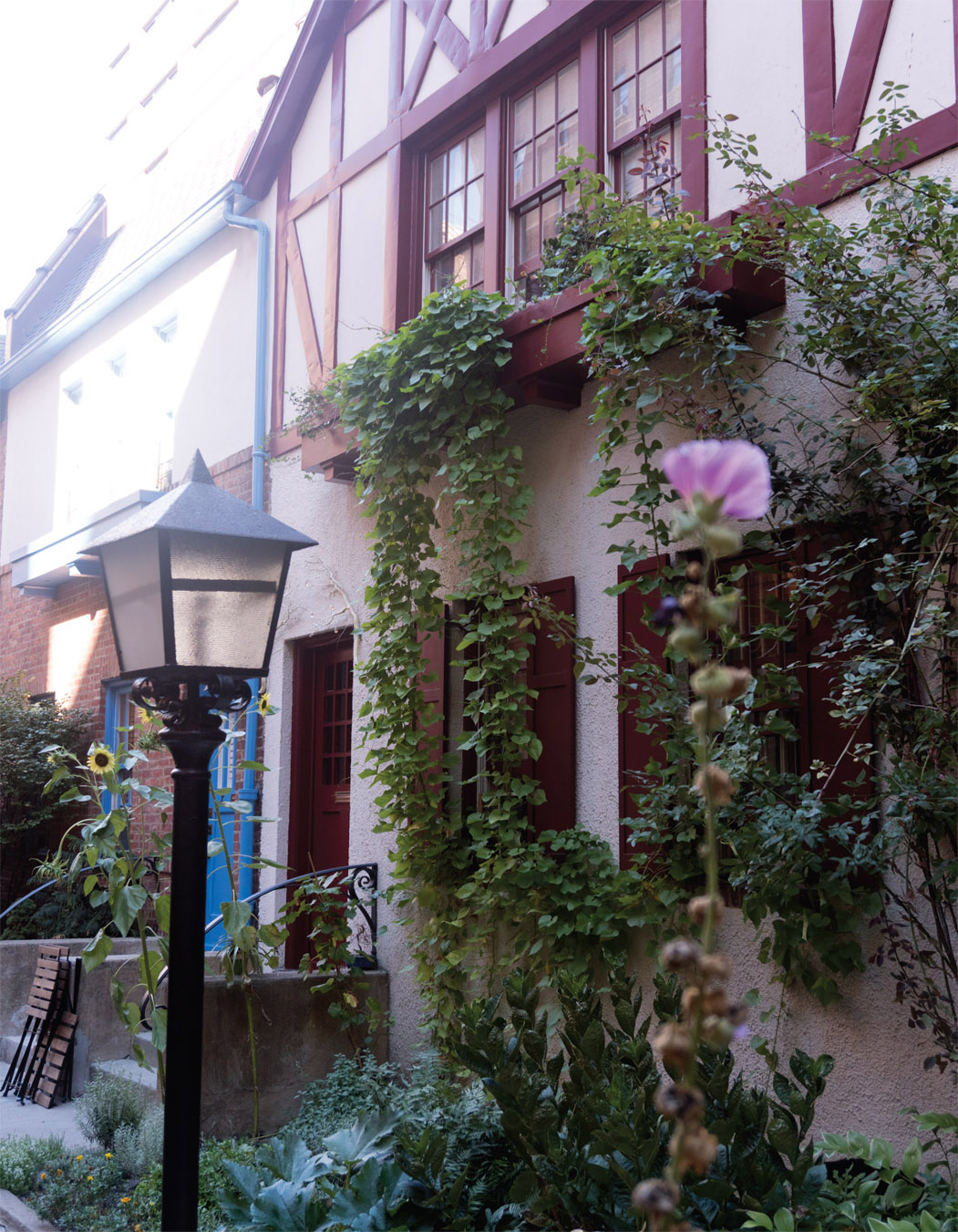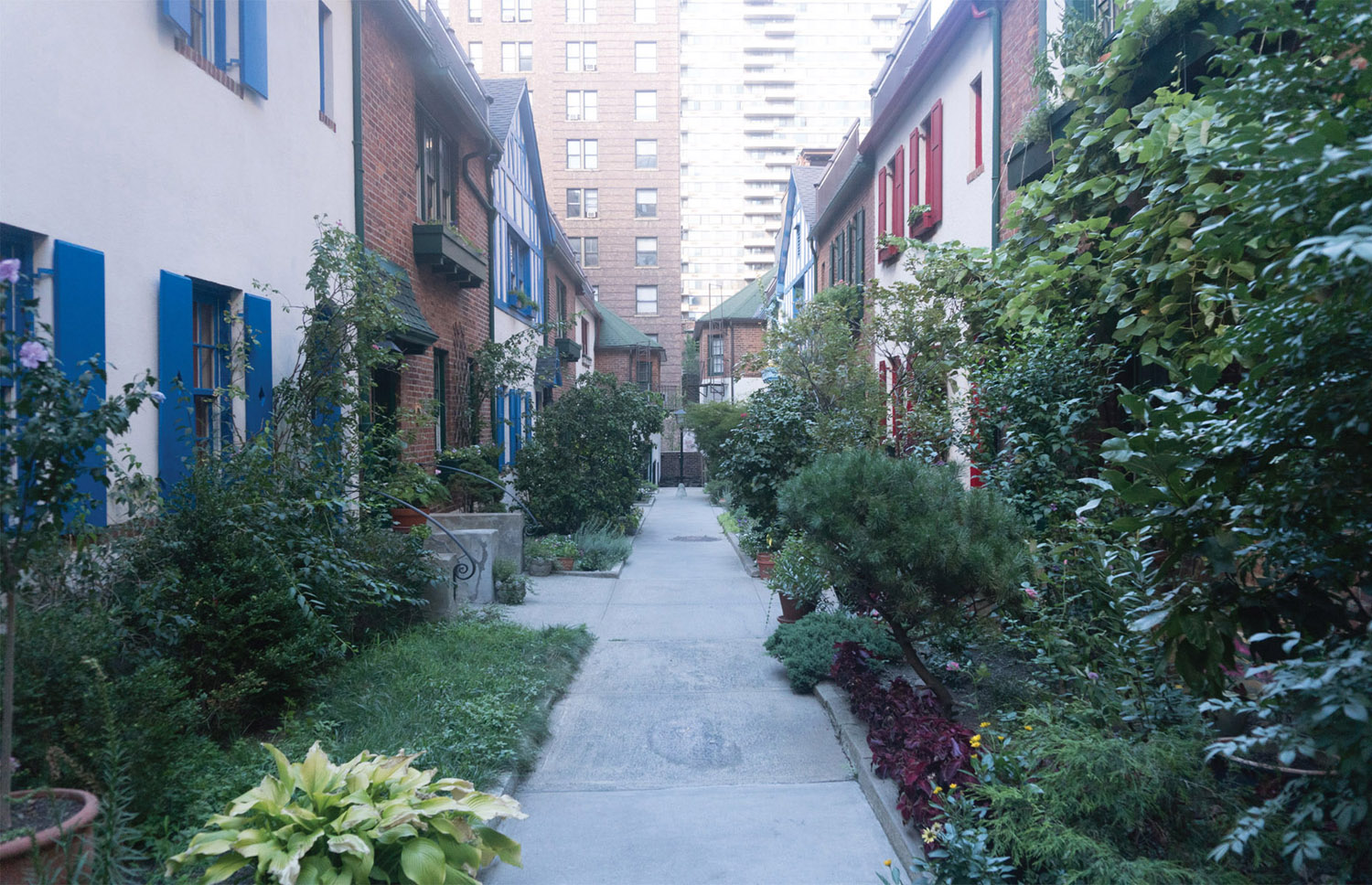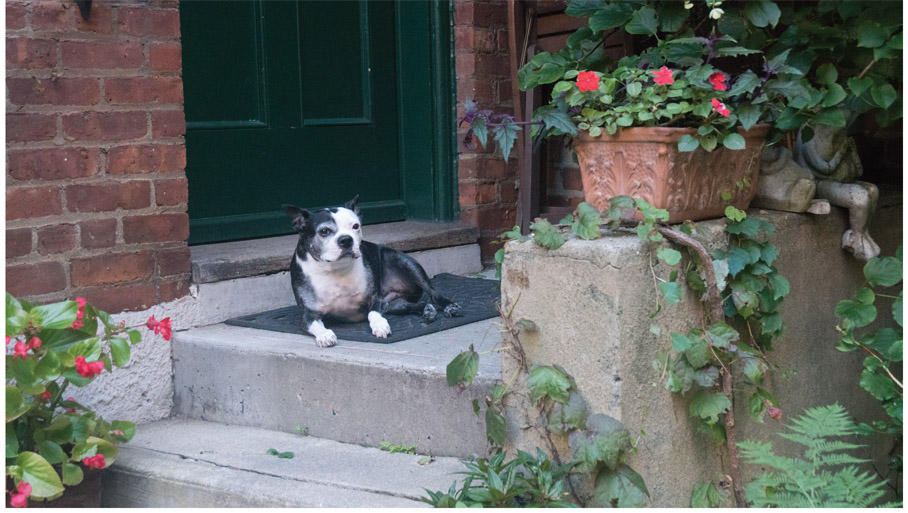

Residents of Pomander Walk are used to it; a group of passerbys peering through the security gate with almost incredulous looks on their faces. Who can blame them? For it is a wonderfully curious sight. For just beyond the gates is seemingly picturesque European village. A tiny enclave of cottages somehow managing to exist among the concrete and steel of Manhattan. As author and former resident Darryl Pinckney said of Pomander Walk in his book High Cotton, The place “an insertion of incredible whimsy” into the Upper West Side.
It lays just off of 94th and 95th streetsbetween Broadway and West End Avenue, on an elevated patch of land of two-story cottages situated in two rows. Each one looking fussed over and loved, with front flowerbeds carefully manicured and fronts brightly painted in primary color hues.
Actually Pomander was never supposed to be permanent or frankly, this cherished. It was initially built in 1921 to earn some fast cash for a larger real estate project. Its builder, Thomas J. Healy who ran a series of businesses including nightclubs and cafes initially wanted to build a hotel here. But when funding fell through, he built Pomander Walk as a rental complex to generate some income. Once he raised enough money, he planned to tear down the little houses and build the hotel. However the plan never came into fruition, with Healy dying in 1927.


His inspiration to build Pomander Walk like a sleepy English village comes from the world of theatre. Initially he wanted to rent to people working in theatre. So he took the little colony straight from the set of a popular Broadway play, Pomander Walk, named after a fictional walkway in the London suburb of Chiswick. Written by Louis N. Parker, the romantic comedy (which was a novel before it was a play) revolves around a “keeping up with the Jones’” plot, thus the small, yet grand homes were a fitting analogy for the play. As Parker stated in a 1921 New York Times interview, “The little houses,” says Louis N. Parker, “were built in the sober and staid style introduced during the reign of her Majesty Queen Anne. The architect had taken a slyly humorous delight in making them miniature copies of much more pretentious town mansions.” You might have thought the houses were meant to be inhabited by very small Dukes, so stately were they in their own way.”
Built by the architect firm King and Campbell, the houses are built from a variety of brick and stucco with some half-timbering decoration all contributing to the overall Tudor-revival style—a style quite in vogue in New York City during the 1920s. The interiors are plain and simple, though today’s residents, like all other New Yorker’s, have learned to maximize and decorate the spaces to the hilt. Most have converted the houses from two family to one family homes giving each around 1,300 square feet of living space. Though modernization has been undertaken, like proper wiring, kitchens, and bathrooms, original touches like window boxes, wrought iron railings, and curb gardens have all been respectfully preserved.
As the decades came and went, Pomander Walk remained a rental property and slowly went into disrepair. Luckily it was landmarked in 1982 and turned into a co-op with most of the owners dedicated to improving and preserving the homes.
Becoming a resident in Pomander Walk is not easy. The vetting process was once particularly hard, but now the homes themselves are restrictive. They can go for upwards of a couple of million dollars—not bad for houses said to cost a little under three-thousand dollars to build. These homes are so loved and cherished, they are even known to be passed down to family members and friends.
If Pomander Walk seems like country living in the middle of a metropolis, resident Brelyn Vandenberg agrees, “During the summer the doors swing open and stay that way. My kids can go outside and play out in the front, and I can cook dinner while I watch them.” Natalie Weiss, a former resident and real estate broker who has sold several houses here, says Pomander Way is a way of life, “Because of the proximity of everyone, you have to be friendly. It makes people good neighbors.”
ACTORS
Healy’s plan to attract artistic types worked; better than he probably imagined. Throughout its history, Pomander has attracted all kinds of artists including movie director William Parke, playwright Herbert Stoddard, and actors Nancy Carroll, Ward Morehouse, Herbert Stothart, Paulette Goddard, and Rosalind Russell. Humphrey Bogart was rumored to have lived here a short time as a young man. Even today there are at least a couple of working actors living here. Pomander Walk itself has hit the silver screen; scenes from the Woody Allen movie, Hannah and Her Sisters were shot here.